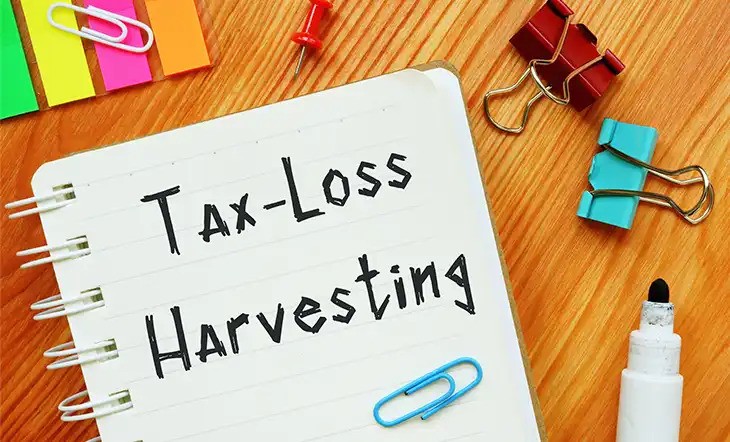Here's How Much You Need to Retire in the Top 10% of Americans — Are You on Track?

Your retirement needs will largely depend on your lifestyle, the cost of living in your city of residence, and personal factors like healthcare expenses. While there is no unified figure for retirement, setting a concrete financial target can be highly motivating to help you save for your future needs. Aiming for a higher goal increases the likelihood that you will save enough to cover your needs, even if you do not reach your exact target. Looking at the savings habits of the top 10% of retirees can give you a benchmark to work toward and help you stay on track.
To be in the top 10% of savers in America, you need to think like them. A financial advisor can help you create a savings strategy that is similar to that of the top savers to help you retire comfortably with your desired nest egg. This article will also explore how much the top 10% of savers have accumulated and how you can adopt their strategies to reach your own retirement goals.
What are the average American savings for the top 10% of savers?
The average American believes they need about $1.46 million to retire comfortably. However, this figure is not optimal for the best savers. As of 2022, the top 10% of retirement savers had an average of $1.3 million tucked away. This is a solid number, but if you want to guarantee financial security and keep up with inflation, aiming higher is a smart move. To confidently break into the top 10%, you would need around $2.5 million in retirement savings now. That might sound daunting but depending on your income and how much you save each month; it is possible with the right savings strategy.
The figure of $2.5 million is decided based on what percentage of your income you need in retirement. A common rule of thumb is that retirees need 70% to 80% of their pre-retirement income. Further, you can determine your retirement savings goal by using the 4% rule. The 4% rule suggests withdrawing 4% of your savings each year post-retirement. Now, if you follow the 4% rule with a nest egg of $2.5 million, this would give you an annual income of $100,000 in retirement. That is enough to maintain a comfortable lifestyle without constantly worrying about outliving your money or falling short in the face of financial emergencies.
If you want to retire with financial freedom, shooting for at least $2.5 million puts you in the top 10% of savers. However, if you contrast this to how much savings the average American has, you will find that most people are far from the $2.5 million mark. Here’s how the average mean and median retirement savings look across different age groups:
- For individuals under 35, the average retirement savings stand at $49,130, while the median savings are notably lower at $18,880. This is perhaps because younger people do not earn as much and may have liabilities like student loans, which can impact their ability to save.
- By the time individuals reach the 35-44 age range, the mean savings grow to $141,520, but the median remains much lower at $45,000.
- As people enter their peak earning years between 45 and 54, the mean retirement savings increase substantially to $313,220, with the median reaching $115,000.
- The mean savings for people aged 55-64 are $537,560, and the median is $185,000.
- For retirees aged 65-74, the average savings peak at $609,230, while the median savings stand at $200,000.
- Beyond age 75, the mean retirement savings decrease to $462,410, with the median dropping to $130,000. This drop is due to withdrawals in retirement.
Naturally, younger individuals have had less time to save and invest, while older groups tend to have higher balances as they are earning more and are more focused on saving for their future needs as the goal nears. However, looking at these numbers, it is evident that most Americans are not even close to the $2.5 million mark that would allow them to withdraw $100,000 annually using the 4% rule. Instead, a retiree aged 65-74 has a median savings of just $200,000, which, at a 4% withdrawal rate, would provide only $8,000 per year. This is far from enough to live comfortably.
Another major factor influencing retirement savings is where you live. Surveys show that some states have higher savings levels than others. Here are the three states with the highest average retirement savings:
- Connecticut: $545,754
- New Jersey: $514,245
- New Hampshire: $512,781
Even in these high-saving states, the average balances still fall well short of the $2.5 million goal that would place someone among the top 10% of savers.
What can you do to ensure you are on track to be in the top 10% of savers?
1. Use retirement accounts
There is an evident disparity in the use of retirement accounts across the country. According to the Survey of Consumer Finances, 61.8% of White, non-Hispanic Americans hold a retirement account, compared to 34.8% of Black families and 27.5% of Hispanic families. This disparity is concerning because, regardless of ethnicity, retirement expenses are the same for everyone. Everybody needs to cover housing, healthcare, food, and more in retirement. Another survey found that an estimated 155.6 million people, or 60% of the population, do not have a dedicated retirement savings account. Half of baby boomers between the ages of 59 and 77, who are either retired or nearing retirement, have no savings specifically set aside for their post-work years. Generation X, between the ages of 43 and 58, isn’t faring much better, with 56% lacking retirement savings. Millennials between the ages of 27 and 42 show an even higher percentage at 66%. Meanwhile, Generation Z, between the ages of 18 and 26, has the lowest participation rate, with 73% of the population yet to begin saving for retirement.
If your employer offers a 401(k), 403(b), or a 457 plan, make sure you take full advantage of it. These accounts allow you to save on a tax-advantaged basis. They allow you to use your contributions to lower your annual taxable income and enable your investments to grow tax-deferred – both of which enhance your savings.
For 2025, the contribution limit for these plans has increased to $23,500. If you are 50 or older, you are eligible for a catch-up contribution of $7,500, which brings your total possible contribution to $31,000 per year. For those aged 60 to 63, a recent change under SECURE 2.0 has increased the catch-up contribution even further to $11,250. So, if you missed out on capitalizing on a retirement account in your younger years, you now have a chance to give your savings an extra boost. Maximizing your contributions can help you get a higher employer’s match, too. If your employer offers to match up to a percentage of your salary, you can take advantage of this provision and save even more over the years. Even if you cannot max out your 401(k) immediately, you must try to contribute at least enough to secure the full match.
In addition to employer-sponsored plans, an Individual Retirement Account (IRA) can also help you grow your savings. You can use this if you do not have access to a workplace retirement account. You can also use it as a supplementary account. Using a Roth IRA along with a traditional employer-sponsored plan can help you diversify your taxes. A Roth IRA allows your investments to grow tax-free, and withdrawals in retirement are not taxed. For 2025, IRA contribution limits are set at $7,000, with an additional $1,000 catch-up contribution for those 50 and older.
Financial experts offer a simple rule of thumb for average American savings by age. Following this rule can increase your chances of landing in the top 10% of savers. The rule suggests that:
- By age 40, you should aim to have at least three times your salary saved.
- By age 50, this should increase to six times your salary. By age 60, you should have at least eight times your salary.
- By age 67, a minimum of ten times your salary should be saved.
These milestones ensure you have enough to cover your expenses without relying too heavily on Social Security benefits or other sources of income. You consider automating your contributions for better success and consistency.
SPONSORED WISERADVISOR
2. Start saving early, and if not, make the right moves when you are older
Starting early is always the best strategy when it comes to retirement savings, as it allows your investments to grow over a longer period through compounding. However, not everyone has the opportunity to start early. Many people spend their early years focusing on education, repaying student loans, etc. If you find yourself starting later, perhaps in your 30s or even 40s, it does not mean you cannot build a solid retirement fund. You will just need to be more strategic.
A good way to catch up is by keeping your savings proportional to your income. As you earn more in your career, increase your savings rate accordingly. If you were not able to save much in your early years, you can now use your bonuses and higher salary package to make up for the shortfall. Additionally, consider gradually increasing your contributions over time to ensure you maximize your tax benefits and get higher employer matches, if possible. Make use of catch-up contributions when you become eligible for them. Using these measures can help you cover up later in life.
You would likely have fewer financial obligations as you grow. You may no longer be burdened by liabilities such as student loans, which can free up additional income. While you will likely have new expenses, such as a mortgage or children's education, your increased earnings can help balance these costs. With a higher income, you have more flexibility to allocate funds toward savings and investments. So, do not underestimate the impact of this shift and make small adjustments to your savings rate, however small they may seem at the time.
3. Diversify your investments
The top 10% of savers have a well-balanced portfolio that helps them navigate market fluctuations. Constructing a similar portfolio can help you do the same. When you build an investment portfolio, you must ensure you maintain an equilibrium of high and low-risk options so that the risk and return profile of your portfolio is more balanced. You can do this by following the traditional advice of investing in equities and bonds. You can also explore beyond these commonly used asset classes and consider adding options like real estate, gold, cryptocurrencies, and alternative investments to your portfolio. Real estate or Real Estate Investment Trusts (REITs) can provide passive income along with capital appreciation. Gold can act as a hedge against inflation. Cryptocurrencies can provide exposure to a different market and the potential for exponential growth, albeit with extreme risk and volatility.
If you are starting later in life, you may need to take a slightly more aggressive approach in the early years to maximize growth. While it is important to balance risk, a mix of stocks, bonds, and other assets can help accelerate growth in your 40s or 50s. Make sure to factor in your age, existing savings, and future goals when you construct a portfolio. Taking advice from a financial advisor can also be helpful when exploring different investment options.
4. Avoid debt and other liabilities
A study in 2025 found that 59% of Americans do not have enough savings to cover an unexpected $1,000 emergency expense. Altogether, approximately 43% of Americans indicated they would have to borrow money in some form to handle a $1,000 emergency. About 25% stated they would use a credit card. Another 13% said they would turn to family for financial support, while 5% would resort to taking out a personal loan. Only 41% said they could rely on their savings. One of the biggest differences between top savers and those who struggle financially is their approach to debt. The wealthy understand the difference between paying and earning interest. Paying interest on loans and credit cards is a financial setback while earning interest through investments and savings offers financial freedom. Instead of taking on unnecessary debt, they focus on accumulating assets that generate income and appreciate over time.
Many people mistakenly believe that owning a house or an expensive car makes them wealthy. However, these purchases may act as liabilities rather than assets. A home requires mortgage payments, maintenance, and taxes, while a car depreciates in value the moment you turn the ignition on. To be in the top 10% of savers, you need to include income-generating assets in your portfolio, such as stocks, bonds, rental properties, or even businesses.
The only money that truly impacts your financial future is the money you save and invest. High salaries do not automatically lead to wealth if most of your earnings go toward taxes, debt repayments, and daily expenses. Even individuals with six-figure incomes can find themselves living paycheck to paycheck if they do not manage their money wisely and let their liabilities rise. The key is to focus on keeping and growing what you earn rather than spending it all.
5. Hire a financial advisor
Rich people spend money to earn money. You can do the same. Investing in a financial advisor is like investing in your financial security. With the right professional guidance, your money can grow, and you can be in the top 10% of savers in the country. Reaching the top takes more than DIY investing. It requires expertise, market knowledge, and time. These are things that a professional financial advisor brings to the table. They can help you understand the percentage of salary you need to save for retirement, assist with asset allocation, and minimize liabilities. Hence, you must consider hiring a financial advisor if you wish to retire with a substantial nest egg.
To conclude
How much the average person has saved for retirement varies widely across states and age groups. However, despite these glaring disparities, following a disciplined approach to wealth-building can help you make a significant difference in your financial health. Regardless of where you stand today, making smart financial choices now can help you secure a comfortable retirement. Additionally, hiring a financial advisor can help you implement a suitable savings strategy that ensures you stay on track to reach the top tier of savers.
Use the free advisor match tool to get matched with seasoned financial advisors who can recommend savings strategies to reach your retirement goals. Answer a few simple questions based on your financial needs and get matched with 2 to 3 financial advisors who may be best suited to help you.








.jpg)













.jpg)





.jpg)


.jpg)


.jpg)















.jpg)





.jpg)




.jpg)


.jpg)






.jpg)

.jpg)






.jpg)




.jpg)

.jpg)



.jpg)
.jpg)





.png)
.jpg)
.jpg)




.jpg)

.jpg)


.jpg)


.jpg)

.jpg)

.jpg)
.jpg)
.jpg)

.jpg)

.jpg)




.jpg)


.jpg)

.jpg)


.jpg)
.jpg)
.jpg)
.jpg)
.jpg)

.jpg)




.jpg)
.jpg)


.jpg)
.jpg)
.jpg)
.jpg)

.jpg)
.jpg)














.jpg)

.jpg)


.jpg)



.jpg)












.jpg)



